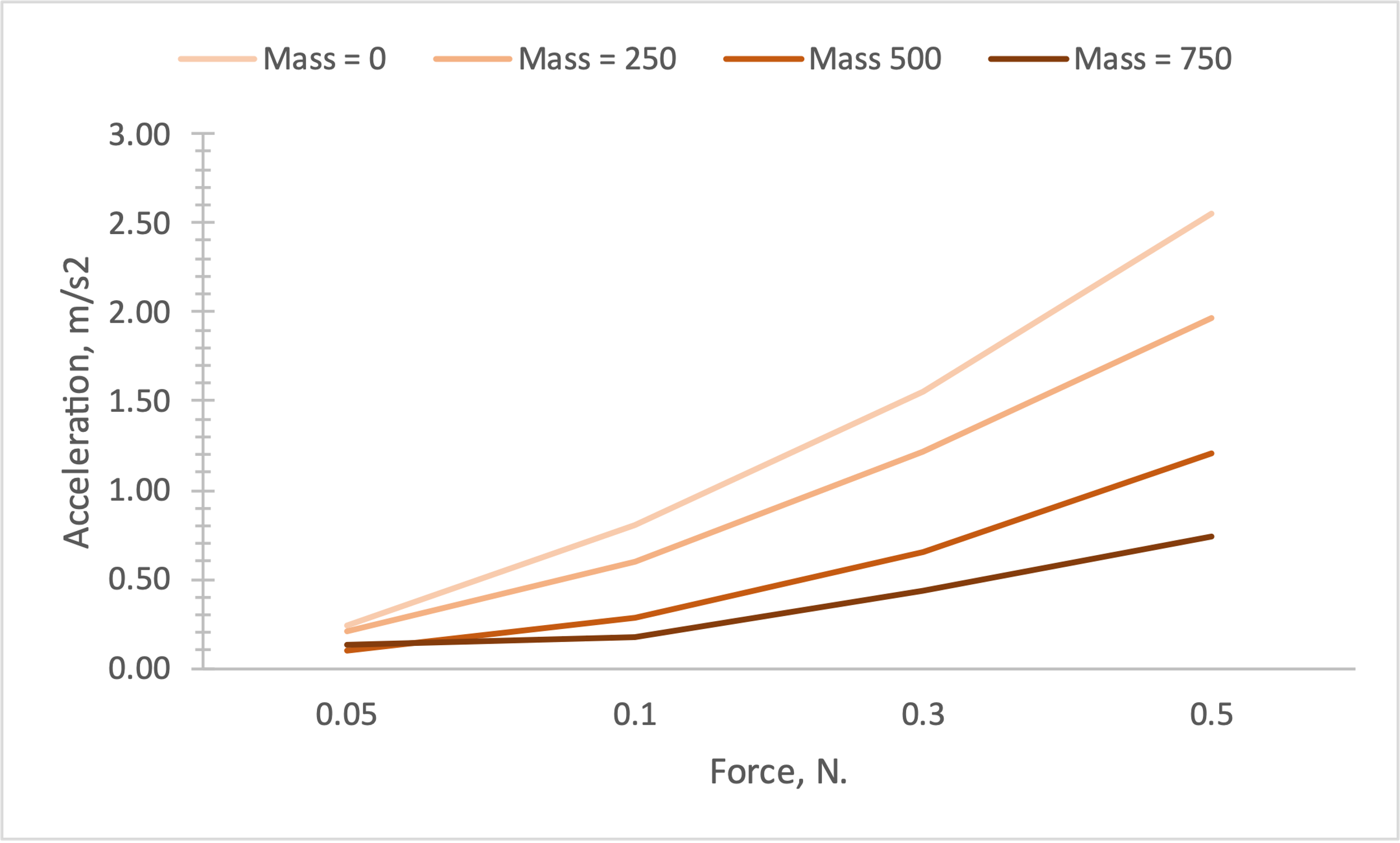Introduction
This research essay aims to explore how mass and force affect the nature of an object’s motion. Thus, mass (m) and force (f) are independent variables, while the nature of motion is dependent. The measure of the nature of motion is its acceleration (a), that is, how fast an object increases or slows its speed. The hypothesis for this experiment is that an increase in mass and a decrease in force leads to an increase in acceleration, that is, a faster motion of the object, and vice versa.
List of Materials
The following instruments should be used to perform this experiment:
- A piston with a force transducer
- A small carriage on wheels
- A stopwatch
- A wooden table three meters long
- An acceleration sensor
- Weights weighing 250 g, 500 g, 750 g.
Procedure
In order to conduct the study, an experiment must be conducted, and numerical data must be collected. At the beginning of a long table is placed a rig with a piston, the force of pushing of which is pre-set. In front of this piston is placed a carriage on wheels, which is driven by a push from the side of the piston. Several experimental lines are conducted to collect data, depending on the set force. For each force measurement (0.05 N, 0.10 N, 0.3 N, 0.5 N), several tests are conducted for different values of the weight loaded into the carriage (0 g, 250 g, 500 g, 750 g) in order to measure the acceleration that the carriage had after four seconds. When the data is collected, all distributions are placed on a graph. An analysis of these visualizations will determine how force and mass affect acceleration, that is, the motion of the object.
Data Table
The acceleration data in four seconds was measured for different masses and forces and is presented in Table 1 below. In order to analyze trends more conveniently, it is necessary to depict these distributions on the same coordinate plane (Figure 1).
Table 1: Measurement of acceleration (m/s2) traveled by the carriage in four seconds of testing

Conclusion
The purpose of this work was to determine the effect of mass and the applied force on the motion of the object. The results reported that within a single mass, there was an increase in acceleration when the force was increased, which means that a larger applied force led to an increase in acceleration. Visually, this was so that the object began to move faster. Within the same value of the applied force, bogies with larger weights had lower acceleration than lighter bogies. In other words, the object started moving faster, that is, it had a higher acceleration when it had the maximum applied force and the minimum mass. This fully supports the earlier hypothesis. It is worth saying that the obtained data fit well with scientific information as well. Thus, Newton’s second equation indicates the relationship between the variables, namely F = ma (OpenStax, 2022). Therefore, the obtained results not only support the hypothesis, but also have scientific evidence.
Reference
OpenStax. (2022). 4.3 Newton’s second law of motion: Concept of a system. OpenStax. Web.